MiGs, Stars & Magic Books: A Brief History of Trespassing in Moscow
An illustrated guide to urban exploration in the Russian capital.

19 June 2019
The city of Shumen in Bulgaria is home to what might just be the best monument in the world. The Monument to the Founders of the Bulgarian State is an enormous, cathedral-like complex on the plateau above Shumen, which tells the story of the early Bulgarian rulers through a series of larger-than-life modernist sculptures. It was opened in 1981 to mark the 1300-year anniversary of the founding of Bulgaria (in 681 AD). But while many other memorials built during the communist period have been doomed now to decay and obsolescence owing to their political symbolism – branded as they often are with hammers, sickles and stars – the Shumen monument, by focussing purely on the ancient past, has managed to remain relevant to, and loved by, its inheritors.
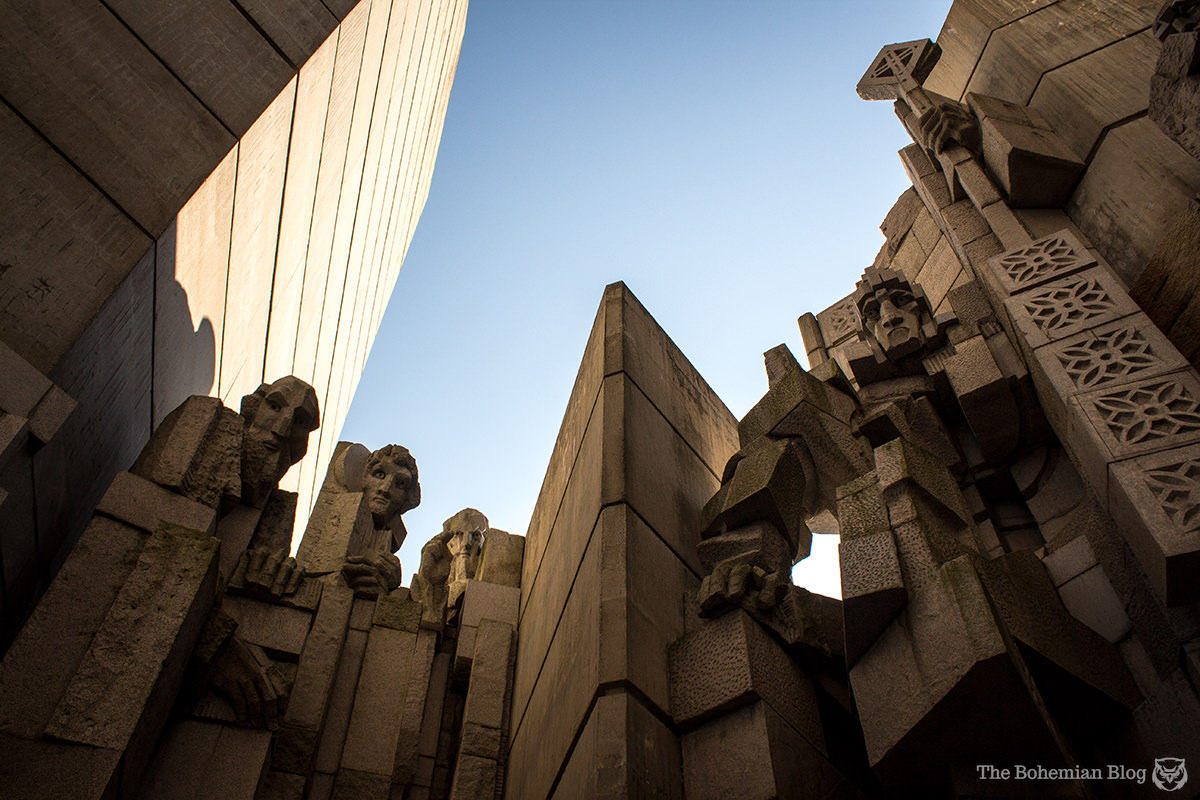

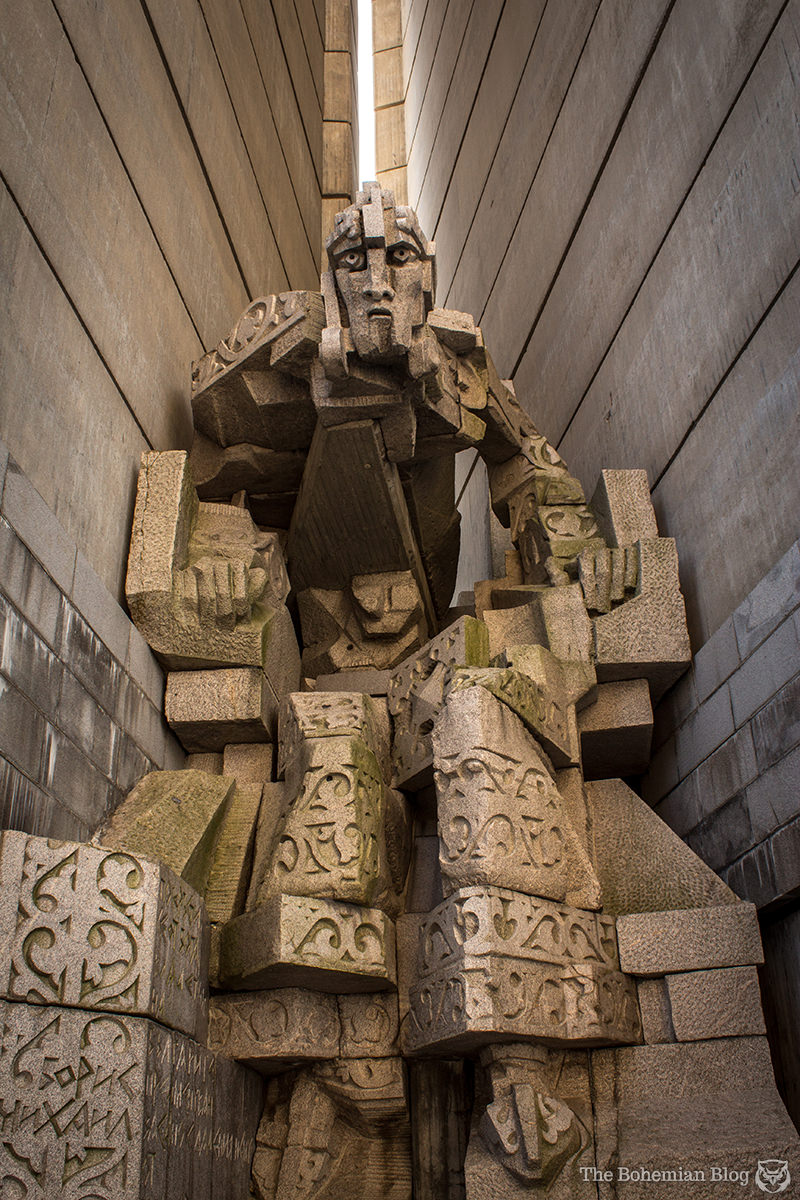
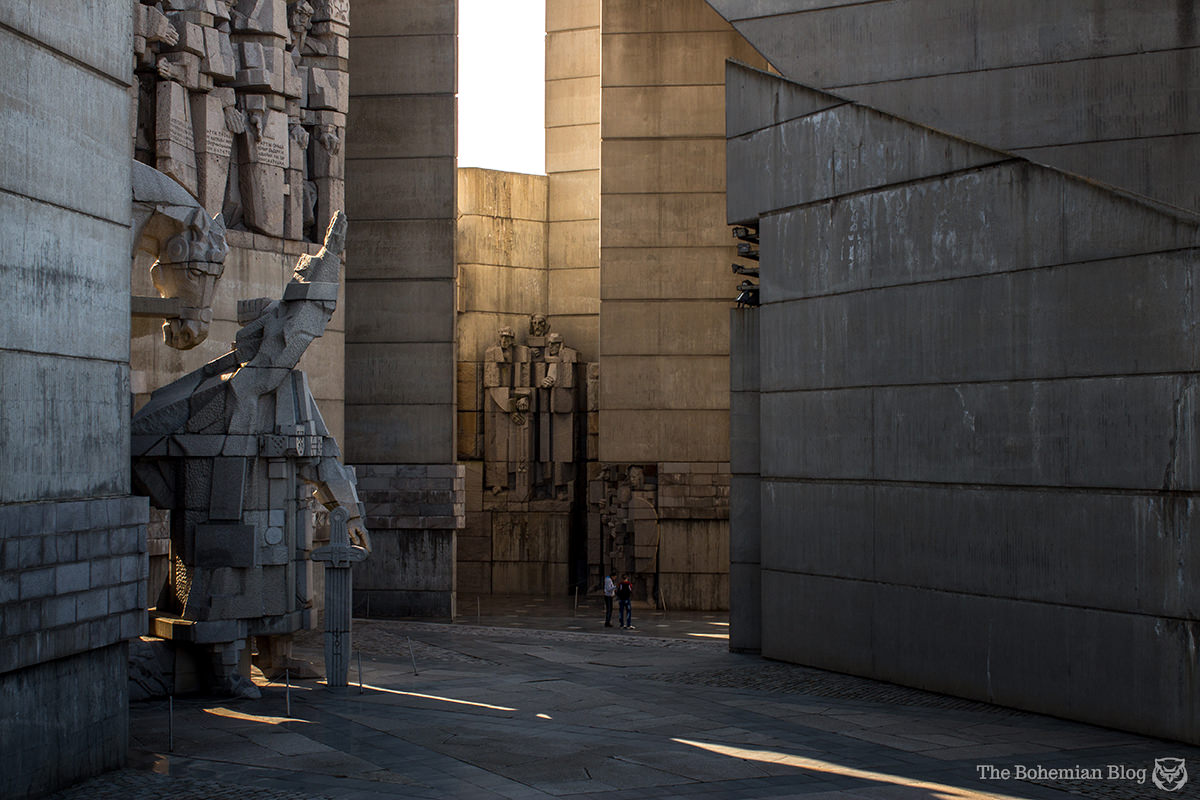
Today this symbol of Bulgarian nationhood is better preserved than probably any other monument built during the 45 years of Bulgarian communism. Foreign visitors, too, come to Shumen in larger numbers each year to marvel at the Monument to the Founders of the Bulgarian State… but many visitors can’t fail to notice another monument in Shumen, albeit an accidental monument not to the founding of a state, but to the collapse of one.
A vast concrete tower looms over Shumen’s city centre: phallic, foreboding, and visible from all ends of the city. Standing 18 storeys high, the tower rises from a construction site six storeys tall and spreading out to fill an entire city block.
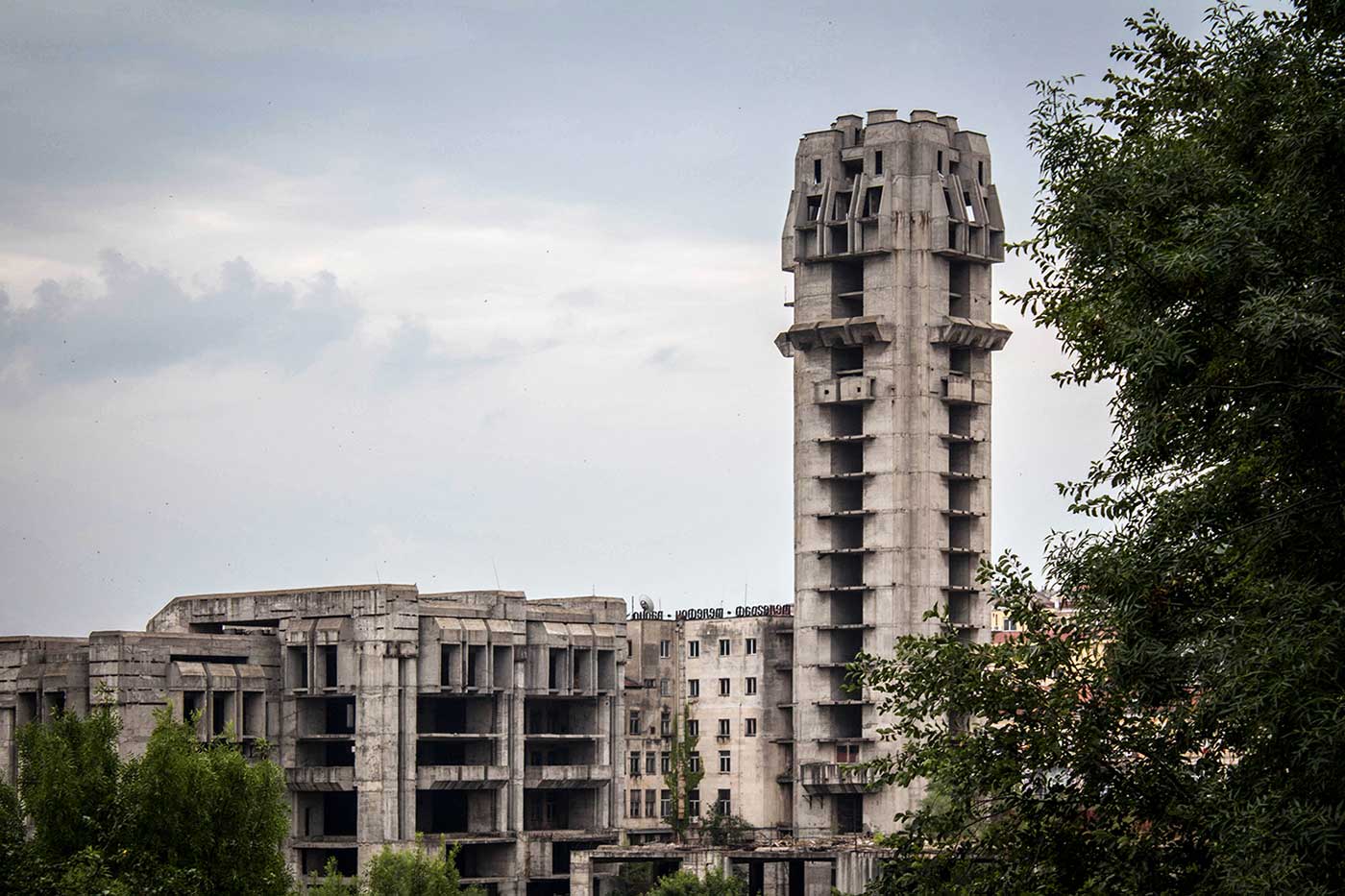

Officially titled ‘Central City Square,’ this gargantuan experiment in urban design was intended to be revolutionary: incorporating shops and a hotel, a post office, cafes and restaurants, a hall for weddings and rituals as well as municipal administrative offices. It was never finished, however. When the Bulgarian Communist Party relinquished its single-party system at the end of 1989, and the country slid into what would be, for at least the first half-decade, a somewhat chaotic and economically unstable democracy, many former state projects were left incomplete. You see them by the roadside – all over Bulgaria are the shells of abandoned construction projects, orphans of a dissolved government. But nowhere in Bulgaria do any come close to the size of Shumen’s Central City Square.
What follows is an exploration of the project – both physical and political – from its lowest levels up to its rooftops; and a meditation on how the Shumen project, if finished, could have marked the beginning of a bold new chapter in Bulgarian socialist citycraft.
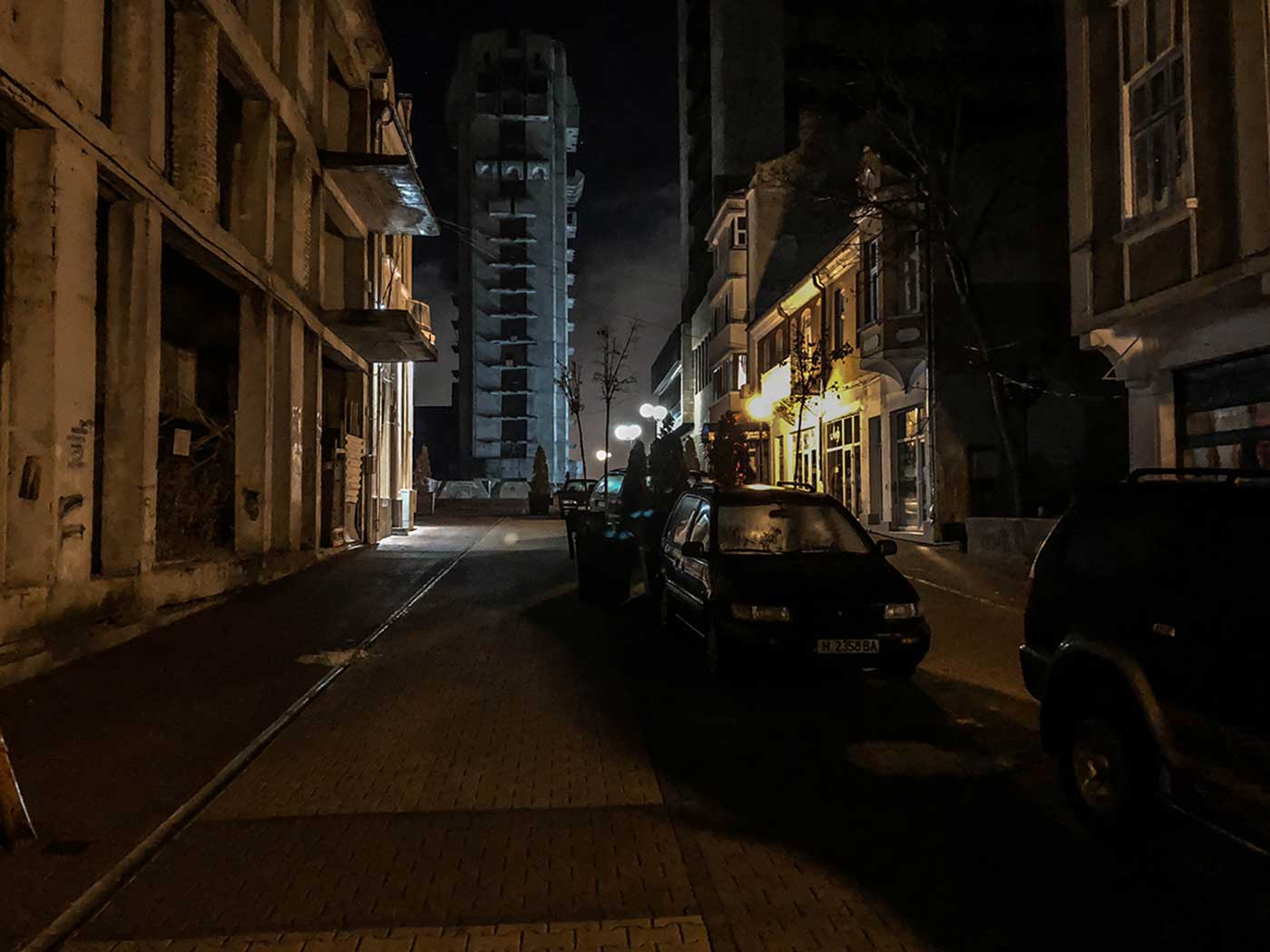

“That’s just the old post office,” one shopkeeper told me, nodding to the tower. “Never got finished and now we’re stuck with it.” Like many visitors to Shumen I had spotted the tower on my way up to the monument on the plateau; it piqued my curiosity enough that I wound up back in the centre afterwards, trying to figure it out. I walked on past the tower – its lower levels wrapped in hoarding, entrances barred – then followed the security fence past the main body of the building for another block. Biggest damn post office in the world, I thought.

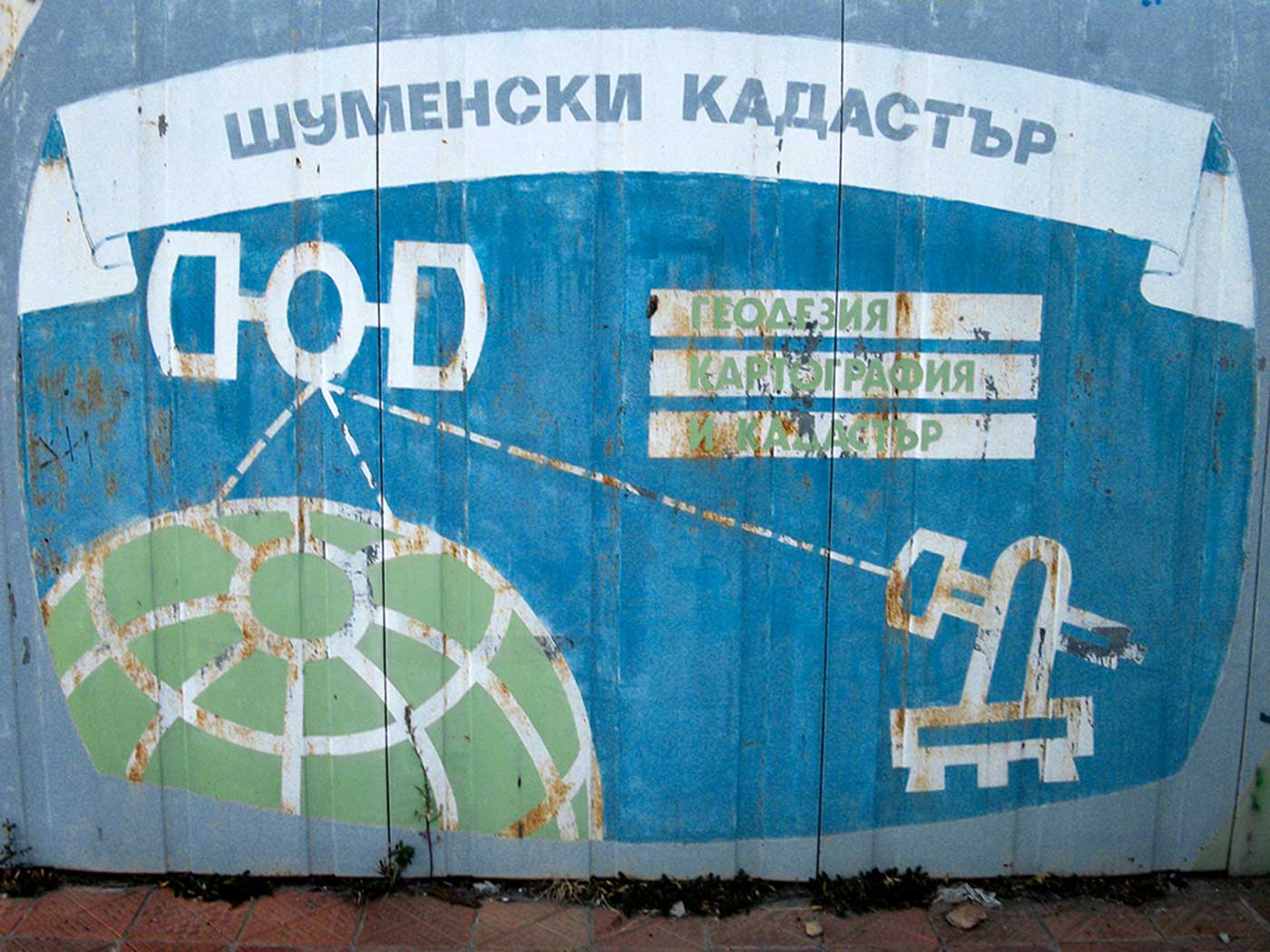
 In a fast food eatery adjacent to the hulking ruin, I got talking to four local youths – Ilyan, Stilyan, Slavi and Misho – and asked them what they knew about it. “I don’t know the whole story,” Slavi said, “There were rumours it was going to be a shopping mall… but now the newspapers say it’s for sale, for like, five or six million levs.” I asked if he’d been inside but he shook his head. “About four years ago there was a child murdered in there. I heard there were junkies too. I’ve never gone inside.”
In a fast food eatery adjacent to the hulking ruin, I got talking to four local youths – Ilyan, Stilyan, Slavi and Misho – and asked them what they knew about it. “I don’t know the whole story,” Slavi said, “There were rumours it was going to be a shopping mall… but now the newspapers say it’s for sale, for like, five or six million levs.” I asked if he’d been inside but he shook his head. “About four years ago there was a child murdered in there. I heard there were junkies too. I’ve never gone inside.”
The Central City Square project is even larger than it looks. The tower is its most visible element, stood between two unfinished blocks which rise behind a security fence established right along the city’s central pedestrian area, Ozvobozhdenie (‘Liberation’) Square. Only by peering over that fence, however, does one realise that the tower and both blocks are all the same building: joined through lower levels, dug into the hillside, with road access to the site from a street behind. In fact, by the time you’re stood at that fence you are already on top of the complex. The lower levels of Central City Square extend beneath the street, emerging behind you as tunnel entrances that look like metro stations. Hotel Madara, overlooking Ozvobozhdenie Square, was supposed to be connected too with underground tunnels that would grant guests easy access to the complex.


The street was redeveloped in tangent with the Central City Square project, and all around the pedestrianised area are motifs thematically connecting it to both the new complex, and the monument on the hill above. For instance, the tallest column of the Monument to the Founders of the Bulgarian State is topped with a stylised black granite lion, based on a 7th century carving… a design that is echoed here in the streets below, with sculpted bronze lion heads set like sentries along a sheer concrete wall. Opposite the lions, the outer wall of the new complex nods to a culture that predates even the first Bulgarians: Hermes the messenger appears in sculpted relief on the face of what would have been the new post office.
This redesign of Shumen city centre was a world apart from the monumental design of previous decades. Nearby, the 1949 Monument to the Red Army on Slavyanski Boulevard was pure, unadulterated socialist-realism; even the 1965 Monument to Freedom leant heavily into safe political territory with its hero figure and engraved hammer-and-sickle motif. But these late-1980s designs of Greek gods and ancient Bulgarian lions – that was bold new territory in Bulgarian urban design.
However, the complex at the heart of this city project was bolder still: intended to revolutionise Shumen’s urban landscape in ways that would have made this city notable not just by Bulgarian standards, but potentially one of the more advanced urban centres anywhere in the socialist world.



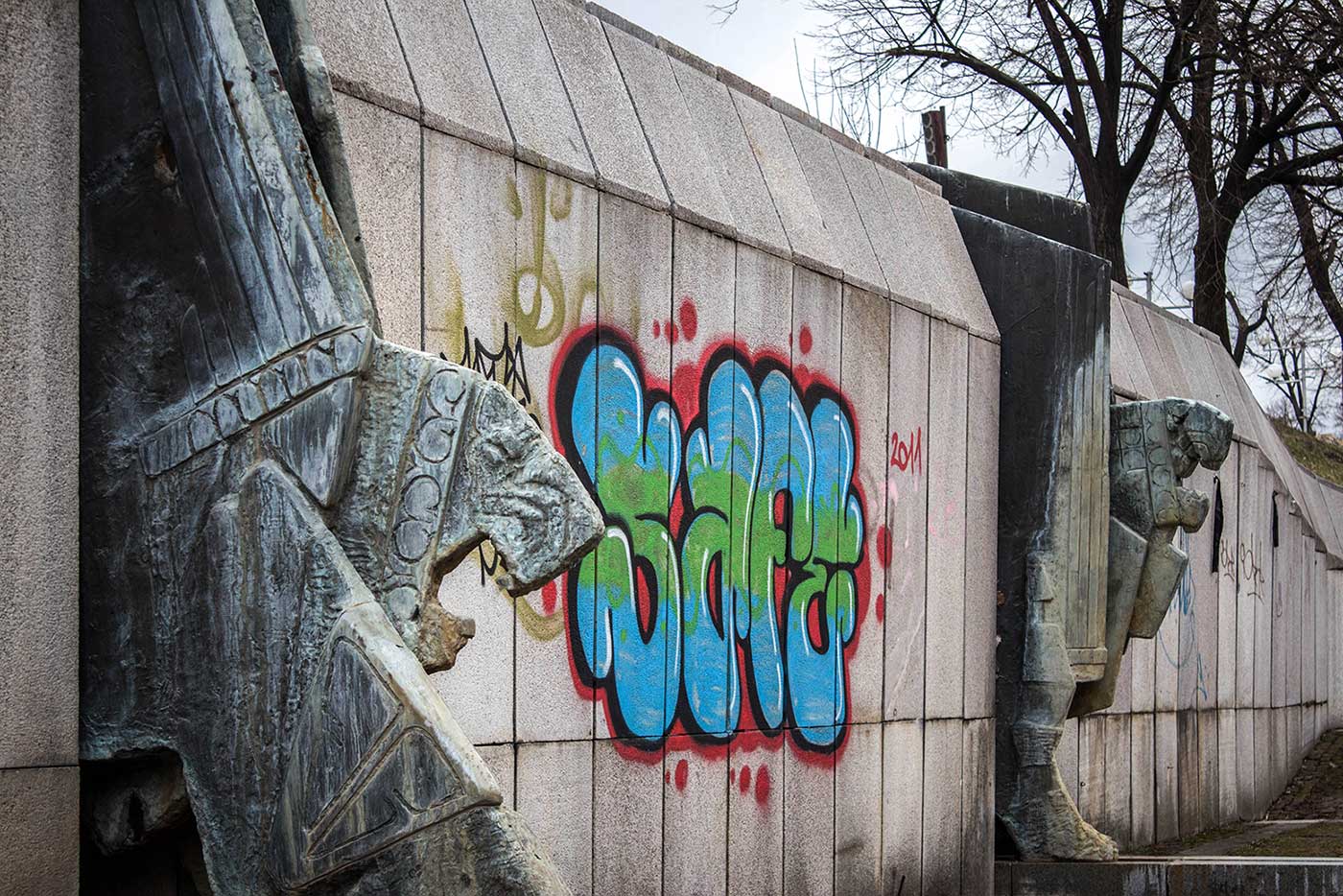
In January 1988, an interview with the architect Ivan Sivrev appeared in Industrial Aesthetics, Decorative Arts (Промишлена естетика, декоративно изкуство): a monthly magazine published by the Bulgarian State Committee for Science and Technical Progress. The architect described his project, Shumen Central City Square, as a “forum” for this 100,000-person city.
“Central City Square has been designed as a living organism,” said Sivrev, “the elements of which are interconnected and interdependent just like, figuratively speaking, the organs of a living creature. [We] intend for Shumen’s centre to materialise as a synthesis between aesthetic, artistic, social, engineering, ecological and other requirements, instilling the rich historical past of Bulgaria into a modern development.”



Sivrev lists the various facilities to be included in the complex: “the ‘Man’s Industry’ Fashion House, ‘Pancho Vladigerov’ Festival Complex, the existing Hotel Madara, and on the first underground level, the House of Rituals and Services.” The Festival Complex alone was to feature: “concert halls, a club house, recital halls, music rooms, a record shop and musical instrument outlets”; meanwhile, “The House of Rituals and Services consists of three ceremonial halls, a family centre and council offices – where various administrative, legislative and technical services will be provided. There is to be a conference hall with 400 seats, and a club-restaurant for the administrative workers.”
Other outlets inside Central City Square included: “Bulgartabak [tobacconists], Pharmahim [pharmaceuticals], and others,” along with a panorama café set on a main balcony, three further coffee shops, “a large delicatessen and a luxury restaurant and nightclub that will seat 250 guests.”

One particular theme that emerges from the interview is Sivrev’s commitment to environmental issues. Shumen Central City Square was designed from the ground up with the goal of combatting congestion and pollution in the city; considerations which had been lacking from many of the Party’s previous large-scale constructions. The Shumen project was to feature open green spaces, rooftop gardens and planted terraces. It was planned with the intention of, “increasing the size of community green areas.” Cascading water would provide a pleasantly refreshing spray in hot summers, while a unified public transport hub would free the neighbouring streets from traffic congestion.
This effect would be achieved at least in part by moving some of the city’s essential functions underground. “The construction of underground levels is a social necessity,” says Sivrev. “Underground levels … bring mass transportation stops immediately next to the city square without creating a conflict between pedestrians and motor vehicles. They improve usage of public transportation significantly … they reduce noise pollution and car emissions.”
“The first underground level will have public transport stations, as well as flower shops, souvenir and jewellery shops, homewares, perfumes, a national lottery kiosk and ticket offices for Balkan [airline], BDZ [rail company], Avtotransport [coach company] and others.” The second underground level was intended to feature, “a car park for 200 vehicles under the square and another space for 250 vehicles next to Georgi Dimitrov Boulevard.” Below that, the third underground level would provide: “a united storage area which will service all buildings in the square.”

The project as a whole reflected new ways of thinking about urban space. There are parallels between Ivan Sivrev’s design, for instance, and the ‘Radiant City’ (‘Ville Radieuse’) proposed by the Swiss-French modernist architect Le Corbusier. In 1930 Le Corbusier exhibited his design for the ‘perfected’ future metropolis: a linear city formed of standardised blocks, with underground transit routes reducing the surface traffic to allow for an abundance of green spaces. Each block would take the form of a self-contained ‘vertical village’ containing shops, laundries, even kindergartens. The architect likened his vision to a living organism, composed of interconnected organs working together in harmony.
Speaking of his own project in Shumen, Sivrev explained, “I believe we managed to achieve conceptual synergy between urbanisation and architectural-artistic concepts. The development and its attributed buildings create the necessary conditions and allow for creating a unified architectural organism in which all levels and structures are both spatially and functionally connected. This, as a matter of fact, is the very first such development in Bulgaria [and it applies] the most advanced principles of underground urbanism.”

It’s also interesting to note the involvement of Bulgarian architect Georgi Stoilov (creator of the Buzludzha Memorial House), as chief consultant on the Shumen Central City Square project. Stoilov himself has cited Le Corbusier as a significant influence in his work, and one of Stoilov’s more recent projects was Urbia-1: a conceptual design for a 1800m skyscraper in Beijing that would take the form of a vertical village for 200,000 residents.
Design sketches show that Sivrev’s plan for Shumen Central City Square would have seen it grow considerably larger than what’s visible today. Much like Le Corbusier’s Radiant City however, the project would remain unrealised… and today, those who venture inside will find not utopia, but a sprawling warren of abandoned spaces and twisting concrete corridors.
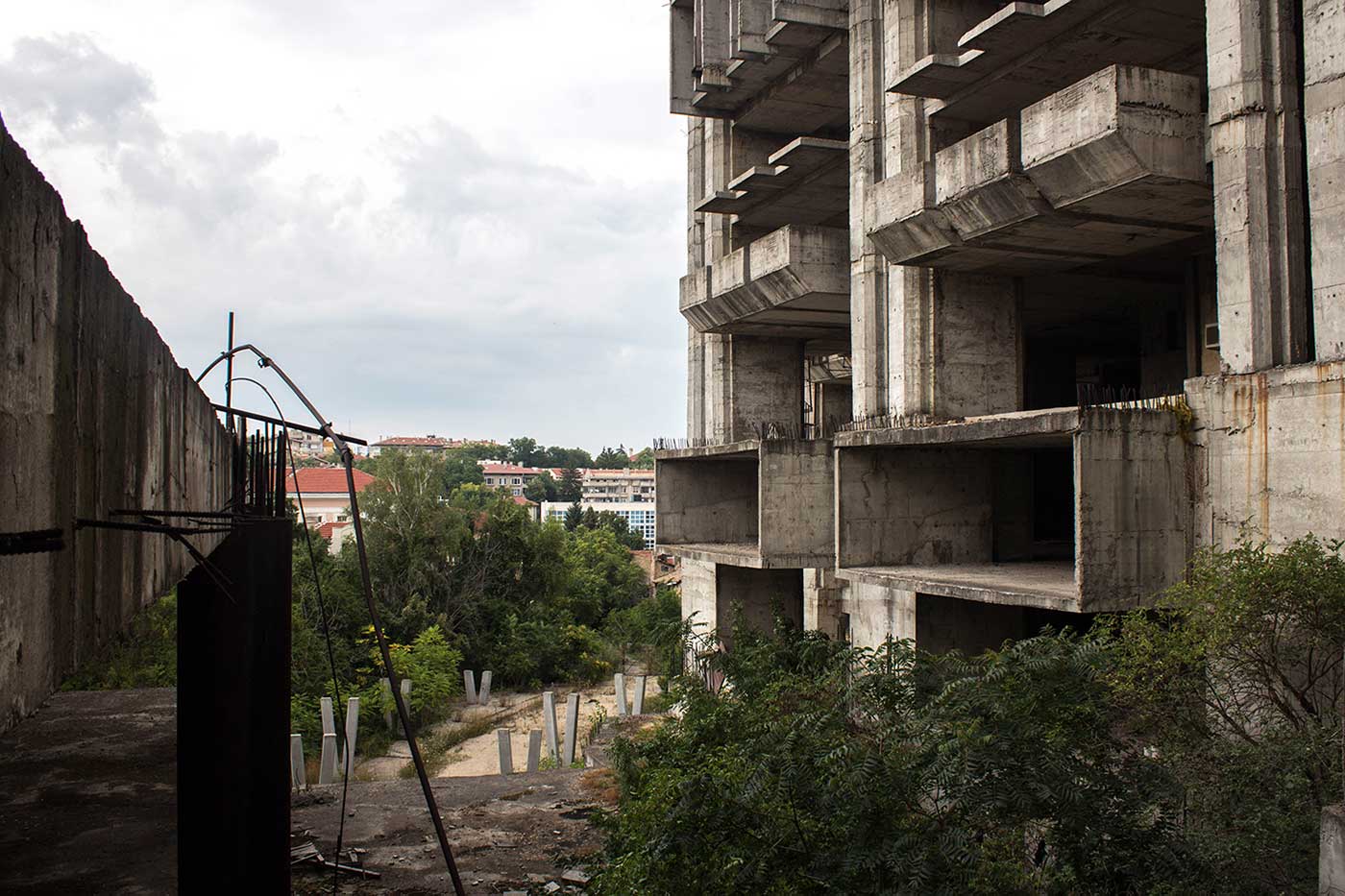
A site this large is difficult to close entirely. The tunnels spread like fungus beneath the streets, popping up as gaping entranceways around the city centre. Most, but not all, are barred. Meanwhile at the rear of the complex, where the hill falls away and the full height of the building is visible, a whole series of vast concrete openings face invitingly onto the rear access road. As a result we were able to walk straight into the complex without so much as a “KEEP OUT” (ВЛИЗАНЕТО ЗАБРАНЕНО!) sign to tell us otherwise.
A wide flight of steps led down from street level into the heart of the complex. Upper passageways and balconies were lined with smaller units that might have contained shops, while in the centre, they spilled into an open foyer area that rose two floors in height. Sunlight slanted in through the back, where the rear wall was missing – perhaps someday, it might have been fitted with floor-to-ceiling windows. The sounds of the city were muted down here, replaced with an ambience of wind and dripping water.

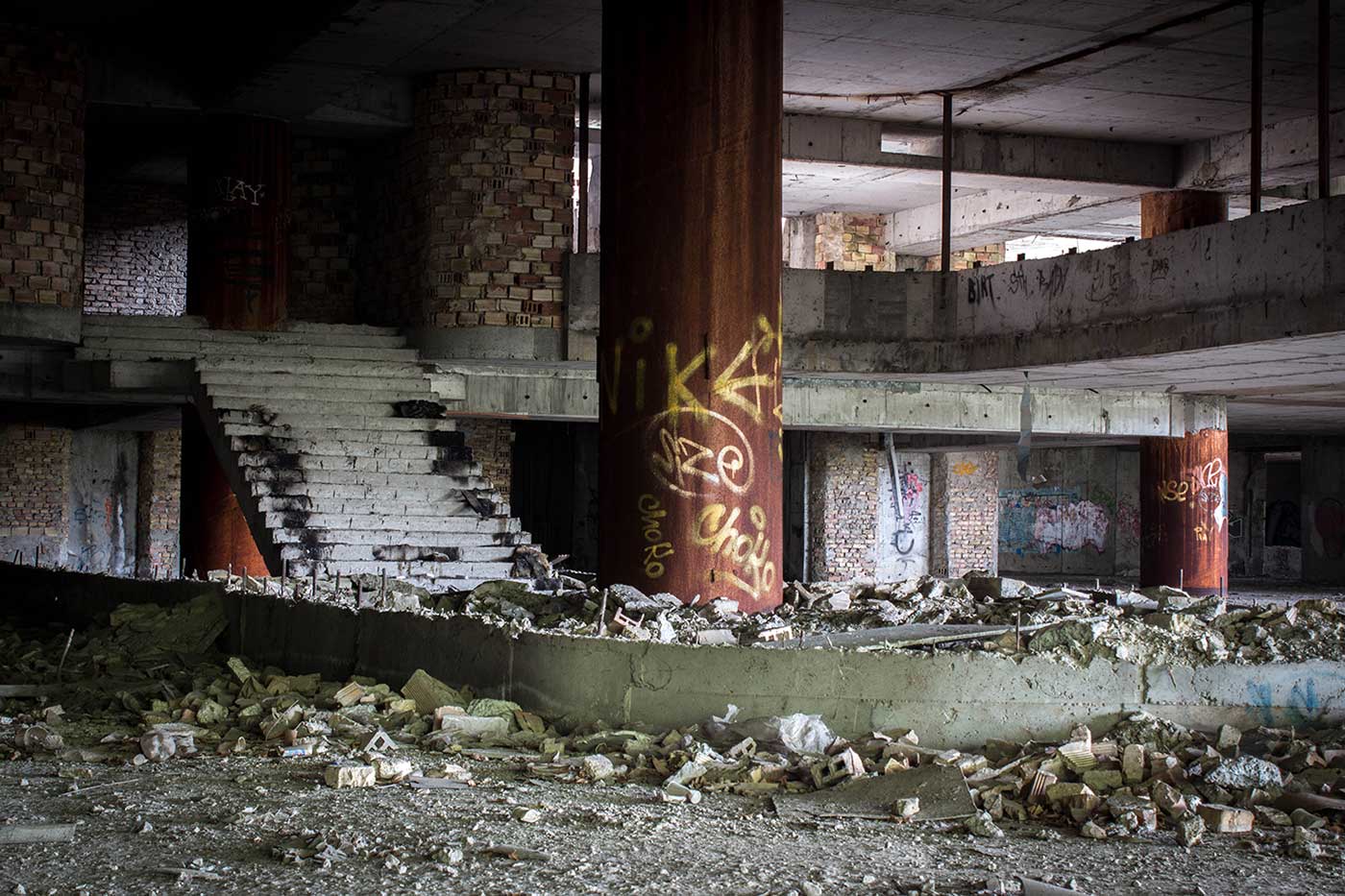
From the foyer, a series of tunnel-like corridors led off in all directions. I followed one spiralling staircase back up to street level, to find myself looking through bars onto Shumen’s Ozvobozhdenie Square. After a moment of disorientation I realised that I had crossed beneath the street, and was now looking at the square from the opposite side.
Back in the foyer of Central City Square, I followed a staircase down to the lower levels. At the rear of the complex, balcony areas looked out across a rubble-strewn builders’ yard behind. On one level a miniature forest exploded out from a decorative pool. Young trees had taken root in a mound of moss and dirt and rubble, surrounded on all sides by empty concrete. Birds chattered in the surreal canopies above.

At its lowest, pitch-black levels, the central area of the complex had the look of an abandoned multi-storey car park; a vehicular access ramp curved up like a helter-skelter from the road behind. This empty space would once have served the city’s transport needs, with parking facilities plus buses and trams bringing shoppers in from Shumen’s outer districts. All about us, unfinished shafts opened up in the floor. They had been left uncovered in the darkened space, deep, smooth pits that would have been impossible to climb back out of. I shone my torch in one to reveal the mummified hide and bones of a stray dog. Another shaft held the remains of a semi-decayed cat.


At the eastern end of the complex we found a staircase that wound up all the way from the ground floor into the tower. A few floors higher, the tower entrance was blocked with a crude – but effective – barricade of welded metal grills and wooden pallets. In a recessed corner I spotted the glowing red LED of a motion detector.

 The easternmost block, rising to a height of six floors, had been designed to contain the new House of Culture. An adjacent building was in use now as the city’s post office, and voices echoed down from the open office windows to bounce about amongst these bare concrete walls. There was a workshop on one floor of this block, what looked like an artist’s space long-since disused. We found rusted tools in there, old electrical equipment, paint tins and dirty, dust-encrusted overalls. On the walls hung faded portraits of Soviet movie stars: Lyudmila Chursina, and another whose name was too faint to read.
The easternmost block, rising to a height of six floors, had been designed to contain the new House of Culture. An adjacent building was in use now as the city’s post office, and voices echoed down from the open office windows to bounce about amongst these bare concrete walls. There was a workshop on one floor of this block, what looked like an artist’s space long-since disused. We found rusted tools in there, old electrical equipment, paint tins and dirty, dust-encrusted overalls. On the walls hung faded portraits of Soviet movie stars: Lyudmila Chursina, and another whose name was too faint to read.
A staircase took us all the way to the roof. We climbed to the very top of the building to look down on the complex that sprawled about our feet. More a citadel, than a building. The bare tower reared over us, an unfortunate eyesore in place of what might once have been something wonderful. Beyond that, 1300 steps – commemorating the 1300 years of Bulgarian statehood – led up the hillside to the very top, where the colossal Monument to the Founders of the Bulgarian State stood in silhouette against the sky; a single walkway connecting Bulgaria’s past, above, with this failed utopian project that might once have been its future.
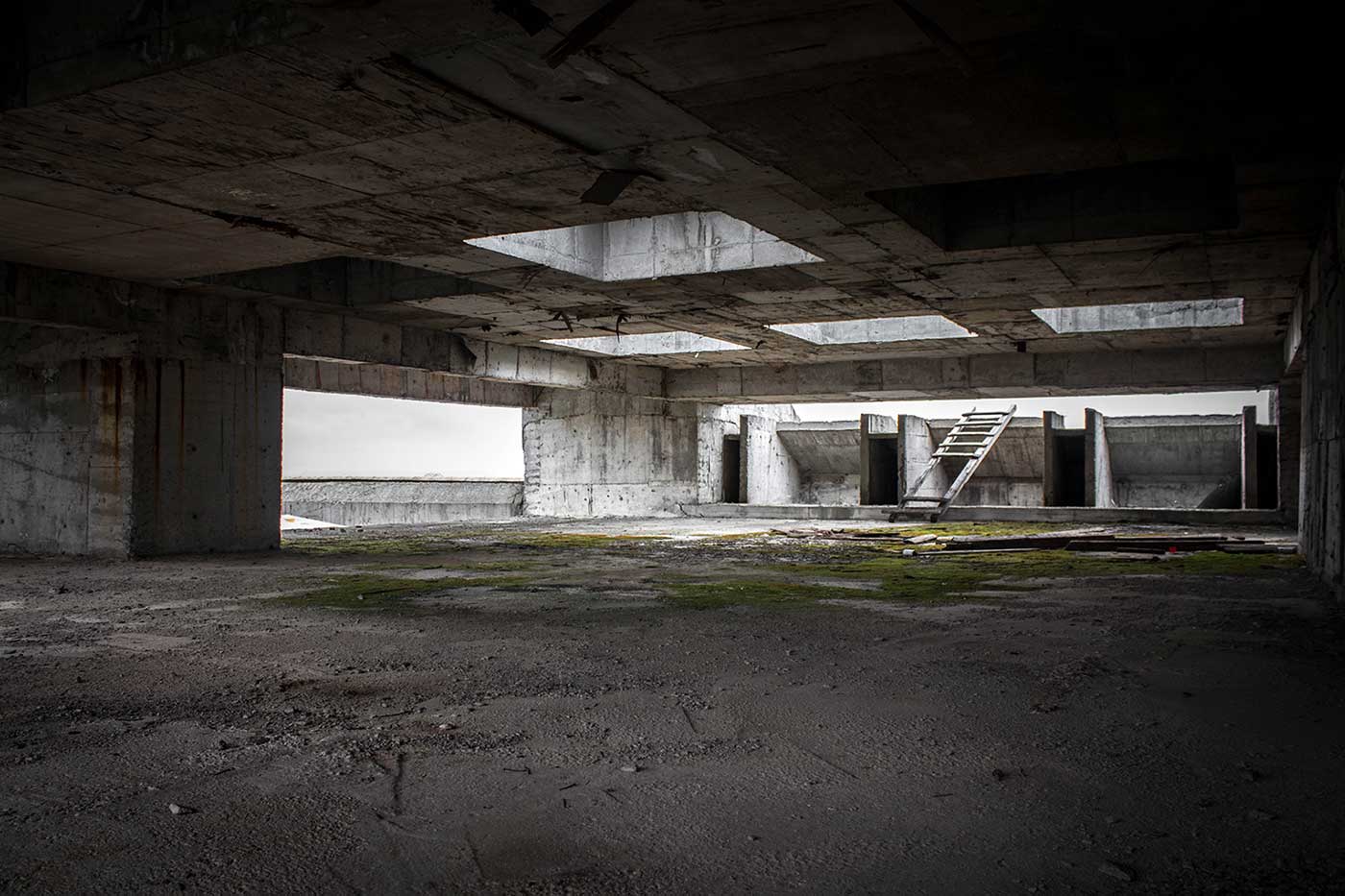
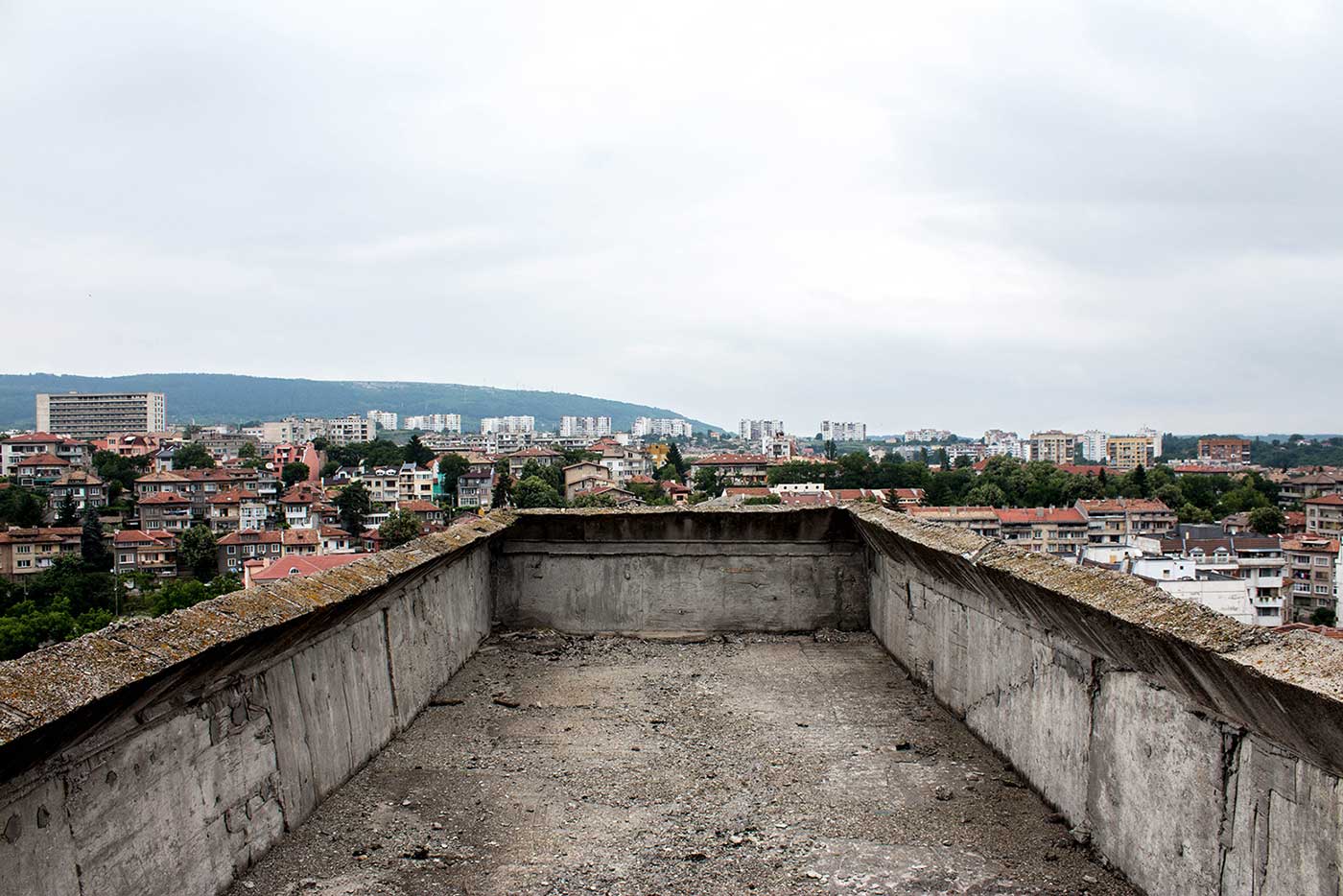
 In 1989 Bulgaria’s communist leader Todor Zhivkov was kicked out by his own party, in response to a number of growing criticisms throughout the final years of his regime (it was his successor, Petar Mladenov, who oversaw the transition to democracy). The rise of nationalism had been a major factor, culminating in Zhivkov’s attempted ethnic cleansing of Turkish and Roma minorities; but there had also been serious environmental concerns.
In 1989 Bulgaria’s communist leader Todor Zhivkov was kicked out by his own party, in response to a number of growing criticisms throughout the final years of his regime (it was his successor, Petar Mladenov, who oversaw the transition to democracy). The rise of nationalism had been a major factor, culminating in Zhivkov’s attempted ethnic cleansing of Turkish and Roma minorities; but there had also been serious environmental concerns.
Zhivkov had continued his predecessors’ urbanisation schemes, with large-scale industrialisation as cities were rapidly expanded to accommodate new work forces. The state had done little, however, to offset the effect this was having on the environment. By 1989, The Ledger reported: “85% of Bulgaria’s river water and 70% of its farmland had been damaged by industrial wastes and pollutants.”
The Danube city of Ruse had it worst of all – when a chemical plant was built across the river at Giurgiu in Romania, it began to exhale toxic gases towards Bulgaria. Soil around the Ruse area was shown to contain concentrations of mineral acid at 40 times over the safe limit. A cloud of chemical gas descended on a Ruse meeting of the Young Pioneer organisation in September 1987, and children as young as seven were seen choking, running for cover with their red neckerchiefs clutched over their mouths. Zhivkov refused to act, however, unwilling to upset his fraternal relationship with the Romanian dictator Nicolae Ceaușescu.
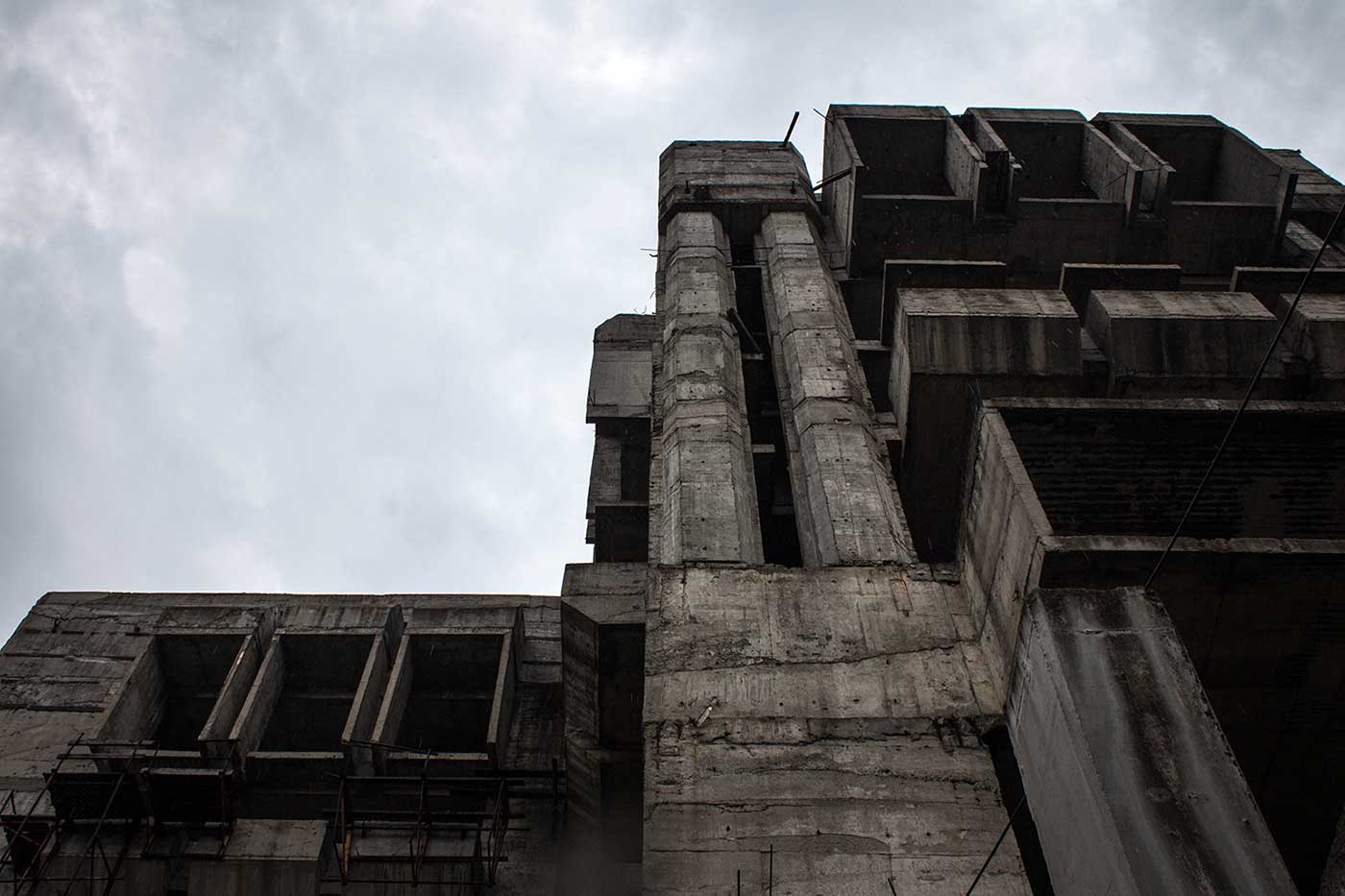
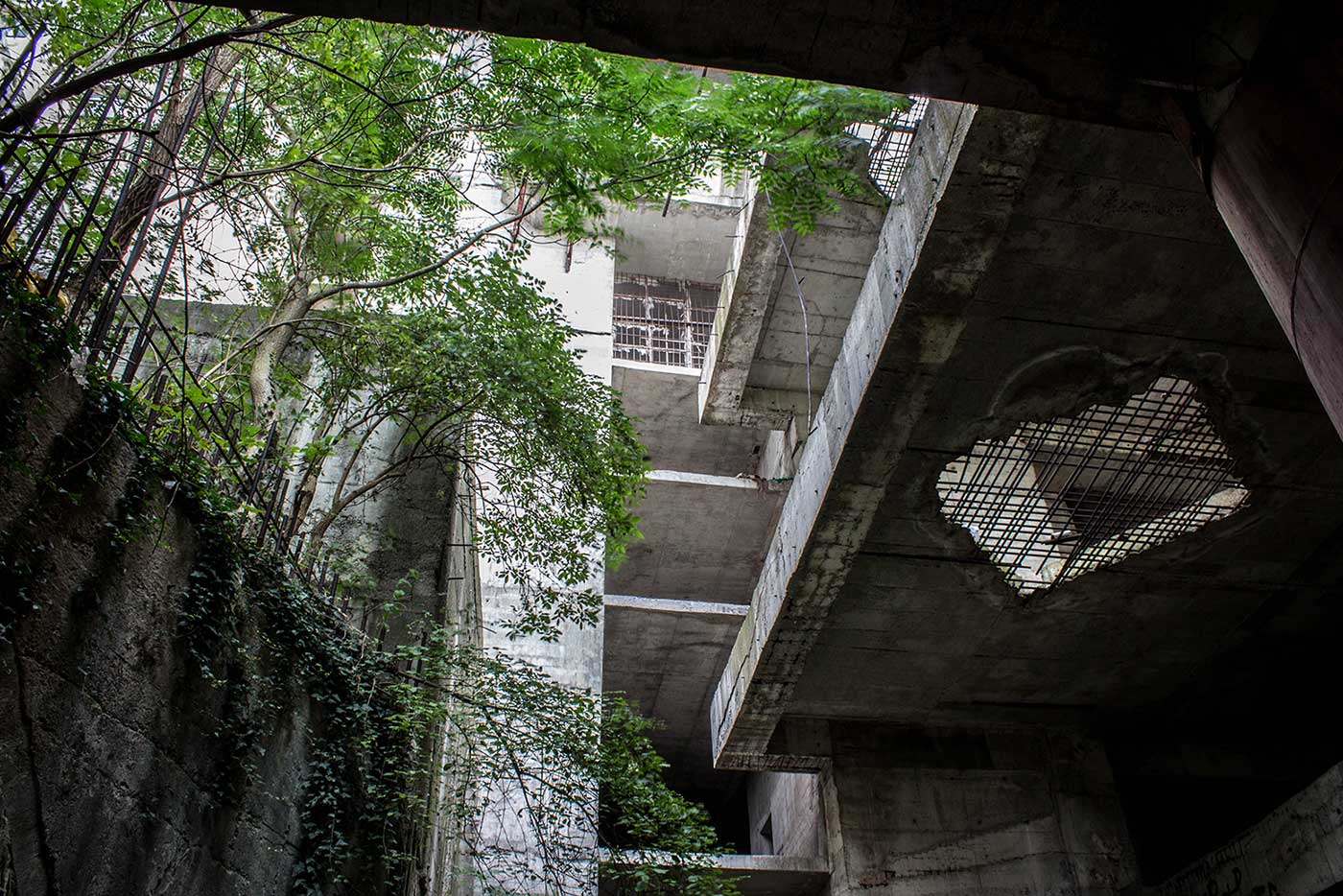
By now, many Bulgarians had had enough. The Committee for the Ecological Protection of Ruse was founded, and they began protesting Zhivkov’s lack of solutions. Initially these demonstrations were crushed – Zhivkov allegedly ordered the beating of a group of environmental activists outside an OSCE summit in October 1989 – but national dissatisfaction grew. Organised, nationwide protest gave birth to the ‘Eco-glasnost’ (‘ecological openness’) movement: a forerunner to the contemporary Bulgarian Green Party.
As Detlef Pollack and Jan Wielgohs note in Dissent and Opposition in Communist Eastern Europe, “On November 3 [1989], Ecoglasnost delivered the crucial blow to the Communist political system. … At least 10,000 people came and marched to parliament, carrying posters and chanting the word ‘democracy.’ It was a crucial breakthrough … Just a week following the Ecoglasnost march, Zhivkov was sacked.”
Perhaps Shumen’s Central City Square – a Corbusian ‘city of the future,’ designed for a new, more ecologically responsible mode of urban living – had been a belated response to the problems. Perhaps it was intended as a trial, as the first of a new wave of ecologically-friendly urban redevelopments; but even if that were the case it was too little, too late.

Even by 1988, the project had reportedly been fraught with difficulties and by disagreements amongst its creative team. Sivrev explained these as, “the inability to comprehend … the unity and yet simultaneously multi-faceted nature of the development.” One engineer had baulked at the prospect of building the tower and “ran away” from the project. “Atypical solutions require atypical thinking,” Sivrev concluded.
But the final blow came in 1989 – when the communist state was dissolved and Shumen’s Central City Square, like so many other unfinished constructions in Bulgaria, had its funding cut off. In place of a “unified architectural organism” the people of Shumen would be left instead to deal with a colossal, crumbling skeleton.




At this stage you might be asking… but why Shumen?
Of all Bulgaria’s cities, Shumen is not the obvious choice of location for a revolutionary new utopia. Shumen isn’t one of the three big cities (Sofia, Varna, Plovdiv); and nor is it associated with any specific industry (unlike, for example, the mining city Pernik, or Pravets with its microprocessor plant); it isn’t famously beautiful like Veliko Turnovo; doesn’t have beaches like Burgas; and it isn’t even known for its humour, like Gabrovo. Rather, Bulgarians rarely seem to have either good or bad things to say about their tenth largest city – it’s just sort of there.
It may seem strange then that Shumen would be singled out for special treatment; but while the modern city of Shumen may fly under the radar for many, the areas around it represent the heartlands of the first Bulgarian kingdom. Only 20km northeast of Shumen lie the ruins of Pliska, the 7th century capital of the early Bulgarian khans; while just east of Shumen lies the village of Madara. Here amongst the relics of Thracian, Roman and medieval Bulgarian settlements, was found an 8th century rock carving of a horseman – the ‘Madara Rider’ – which is so emblematic of Bulgarian identity that today it appears on the nation’s currency. The main hotel in the heart of Shumen was named Hotel Madara, and it’s no coincidence that the Monument to the Founders of the Bulgarian State was placed here in Shumen, its many stone faces gazing out over the same landscape on which the first Bulgarian rulers built their kingdom.

Local stories claim that Todor Zhivkov himself was having a new residence built on the Shumen Plateau. Like the Central City Square project this building remained unfinished by the time he was ousted from office, and today all that remains of it is the skeleton of what would eventually have been an extravagant villa in the woods. From the panoramic rooftop balcony of Zhivkov’s unfinished Shumen residence, only two man-made objects are visible: the Shumensko brewery down in the valley, and above it, the Monument to the Founders of the Bulgarian State. Despite the down-to-earth, man of the people persona that he would often present to crowds, Todor Zhivkov was not a humble man; in 1981 he compared himself to Bulgaria’s 7th century founder, saying: “As Khan Asparuh has given you a nation and land, so too do I give you nation and land.” It may not be too much of a stretch then to guess that he imagined himself at home here – building his place in the pantheon of Bulgaria’s great, historic rulers, from khan to tsar to comrade general secretary.

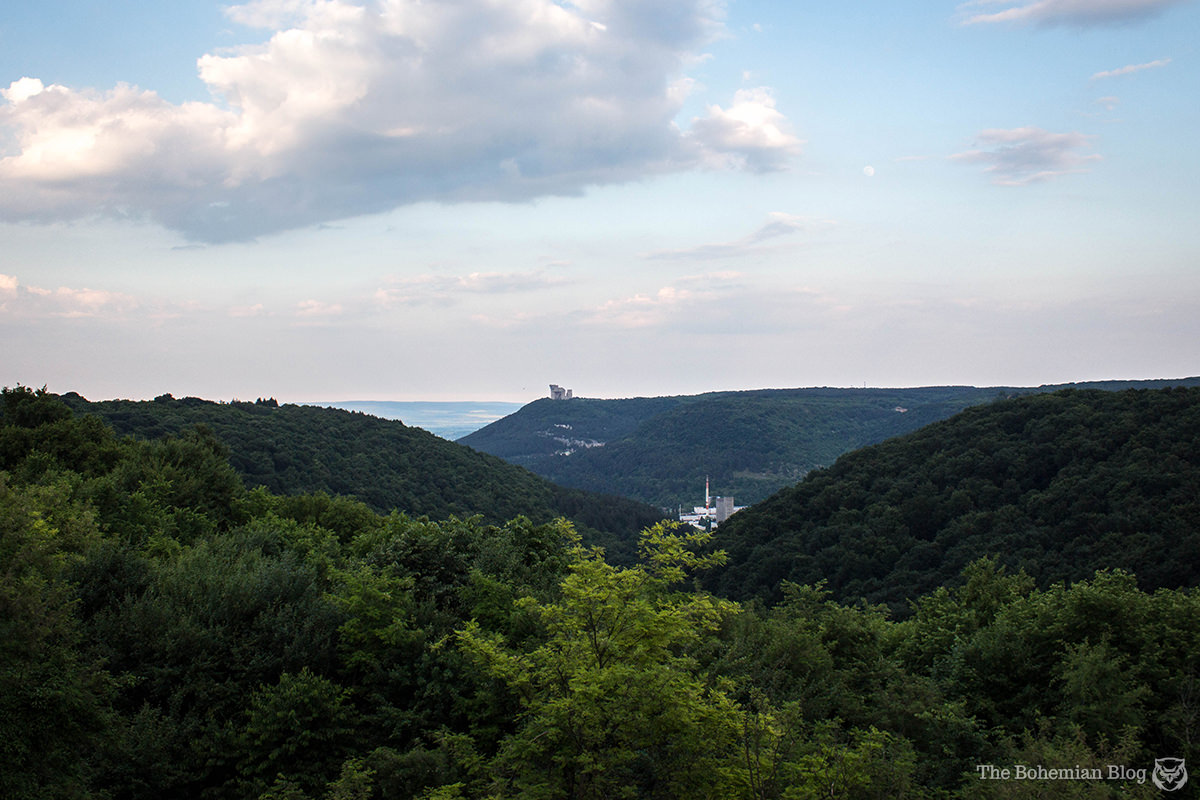
Perhaps then this new complex – Shumen Central City Square, the most ambitious urban development attempted under the Bulgarian Communist Party – might also have been part of that carefully managed narrative: a city of the future built amongst the stones of an ancient empire. The circle completed. That it never got finished is a tragedy not just for the people of Shumen, who now have to live in the shadow of its corpse, but moreover it stands as a missed triumph in the legacy of modern Bulgaria’s architectural heritage.
Translations by Mihail Kondov. Additional research by Daniel Penev.
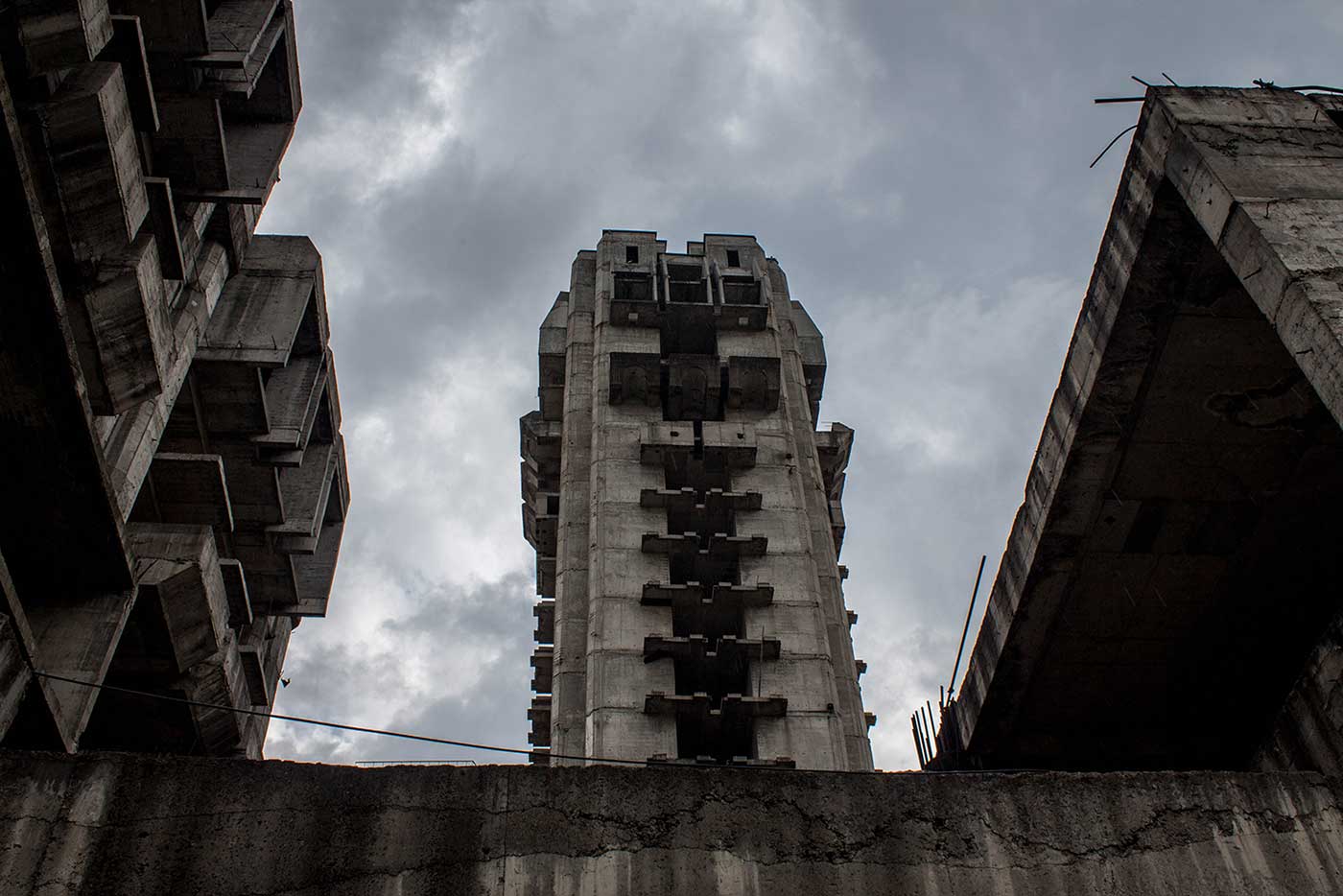




An illustrated guide to urban exploration in the Russian capital.

Poltergeists, ritual murder & a live-in succubus – the 1000-year-old pub with a ghostly reputation

A month-long monument hunt, and what I learned along the way.
I myself have a lot of memories with the city of Shumen and was always fascinated by the giant concrete skyscaper-like building and with time I only grew more amazed by how big the actual complex was in its unfinished state and as a student of achitecture, one of my dreams has always been to at least help with the redesign (where needed to) and finishing of this grand project… And this article informed me very well on this favourite topic of mine, so a sincere Thank you very much from me! (to all readers – have a good day/evening)
Was there yesterday… impressive and sad. Early vision of now common life on the west. Instead of concrete now projects changed to cheaper materials, but purpose is the same
Thank you for for this wonderful piece, it broth back memories – Krum Damyanov was one of mine professors at the architectural university and one of the greatest bulgarian sculptors and probably even the world.
Thank you, Vasko – that’s really interesting. I am a very big fan of his work! Incredible sculptor…
This is a great piece. I regard these left-over monuments as examples of the brutalist architectural style that is not only all over Bulgaria, but also characterises many other cities in Europe, including some key buildings in London (such as the Barbican or the South Bank centre). I am not aware if these are connecting in the study of Bulgaria’s architectural legacy. However, the architectural critic Edwin Heathcote had recently published a lengthy article in the Financial Times on Brutalism across Europe, using also examples from Bulgaria (Bankya).
Thank you, Dina – I really appreciate the comments, and I completely agree with you. This style is not unique to just the region, but reflects a much bigger international trend. I have spoken to some Bulgarian architects from that period who were very aware of the work being done by British, French, and German architects, for example.
I hadn’t seen that piece on the Financial Times, but I think Edwin Heathcote is usually very good – so I’ll go and read it now, thanks.
Thank you for a great article on Shumen. We first visited there in 2007. Really love and enjoy exploring the city and watching the changes over the years.
Such a shame for this project to die.
Maybe one day, someone will decide it’s time to finish it
Thanks a lot; it’s a really cool, interesting, clearly-worded blog w/great photos.
Thank you both.
Christopher – I really hope so. It could do a lot of good for the city, being such a large and central space. And, unlike the various monuments facing similar situations, at least this structure doesn’t have any controversial political symbolism to reckon with. Ultimately it comes down to the cost though, but perhaps with some outside funding support it could happen some day.
Lo malo es que este hormigón está a lo discubierto desde hace 35 años y seguramente esta dañado y peligroso. Soy de la ciudad y es verdad que es una pena el desperdicio